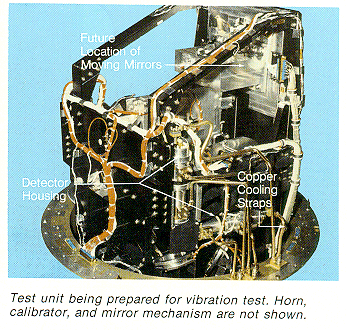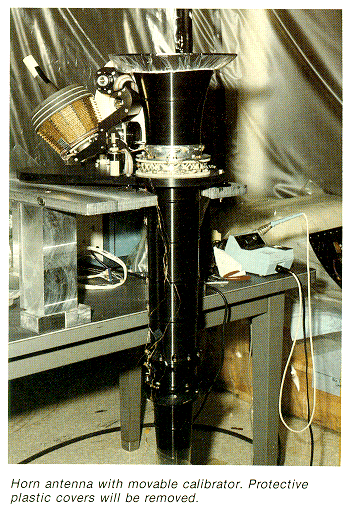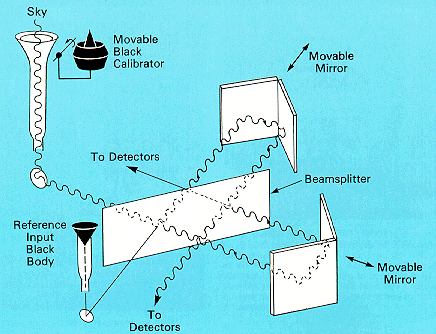

The COBE Far Infrared Absolute Spectrophotometer (FIRAS)The objective of the FIRAS instrument is to measure precisely the cosmic microwave background (CMB) spectrum and to observe the dust and line emission from the Galaxy. It is a polarizing Michelson interferometer operated differentially with an internal reference blackbody, and calibrated by an external blackbody having an estimated emissivity of better than 0.9999 (Mather 1982, Opt. Eng., 21, 769; Mather, Fixsen and Shafer 1993; Fixsen et al. 1994; Mather et al. 1999). It covers the wavelength range from 0.1 to 10 mm in two spectral channels separated at 0.5 mm and has approximately 5% spectral resolution. A flared horn antenna aligned with the COBE spin axis gives the FIRAS a 7 degree field of view. The instrument was cooled to 1.5 K to reduce its thermal emission and enable the use of sensitive bolometric detectors. The FIRAS ceased to operate when the COBE supply of liquid helium was depleted on 21 September 1990, by which time it had surveyed the sky 1.6 times. Original CMB measurement results were reported by Mather et al. (1994) using an early instrument calibration (Fixsen et al. 1994), data from the most stable period of operation, and a model of the Galaxy to subtract its effects. The resulting CMB temperature was found to be 2.726 +/- 0.010 K over the wavelength range from 0.5 to 5 mm. Over this range the maximum deviation from the blackbody form is less than 0.03%, with a weighted rms value of only 0.01%. Fits to the dimensionless cosmic distortion parameters give 95% confidence limits of |mu/kT| < 3.3 x 10-4 and |y| < 2.5 x 10-5 respectively. The implications of these limits for cosmological models were summarized by Wright et al. (1993). The dipole anisotropy of the CMB, presumed due to our peculiar motion relative to the Hubble flow, can be seen clearly in the FIRAS data (Fixsen et al. 1994), which show for the first time that the spectrum of the dipole is that expected from the Doppler shift acting on a blackbody spectrum. FIRAS results also include the first nearly all-sky, unbiased, far infrared survey of the Galactic emission at wavelengths greater than 120 microns. The total far infrared luminosity of the Galaxy is inferred to be 1.8 (+/- 0.6) x 1010 LSun (Wright et al. 1991). Spectral lines from interstellar [C I], [C II], [N II], and CO were detected, and the lines of [C II] at 158 microns and [N II] at 205.3 microns were sufficiently strong to be mapped (Wright et al. 1991; Fixsen et al. 1999). This is the first observation of the 205.3 micron line. The [C II] line is interpreted as coming from photodissociation regions and the [N II] line as partially arising from a diffuse warm ionized medium and partially arising from dense H II regions. The final FIRAS CMB spectrum measurements were reported by Fixsen et al. (1996) and Mather et al. (1999). Mather et al., using an improved understanding of the FIRAS calibrator, give the definitive CMB temperature: 2.725±0.002 K. |




